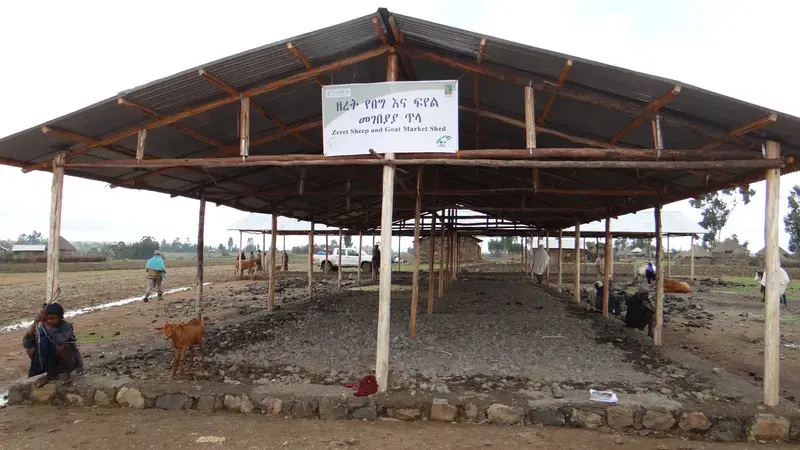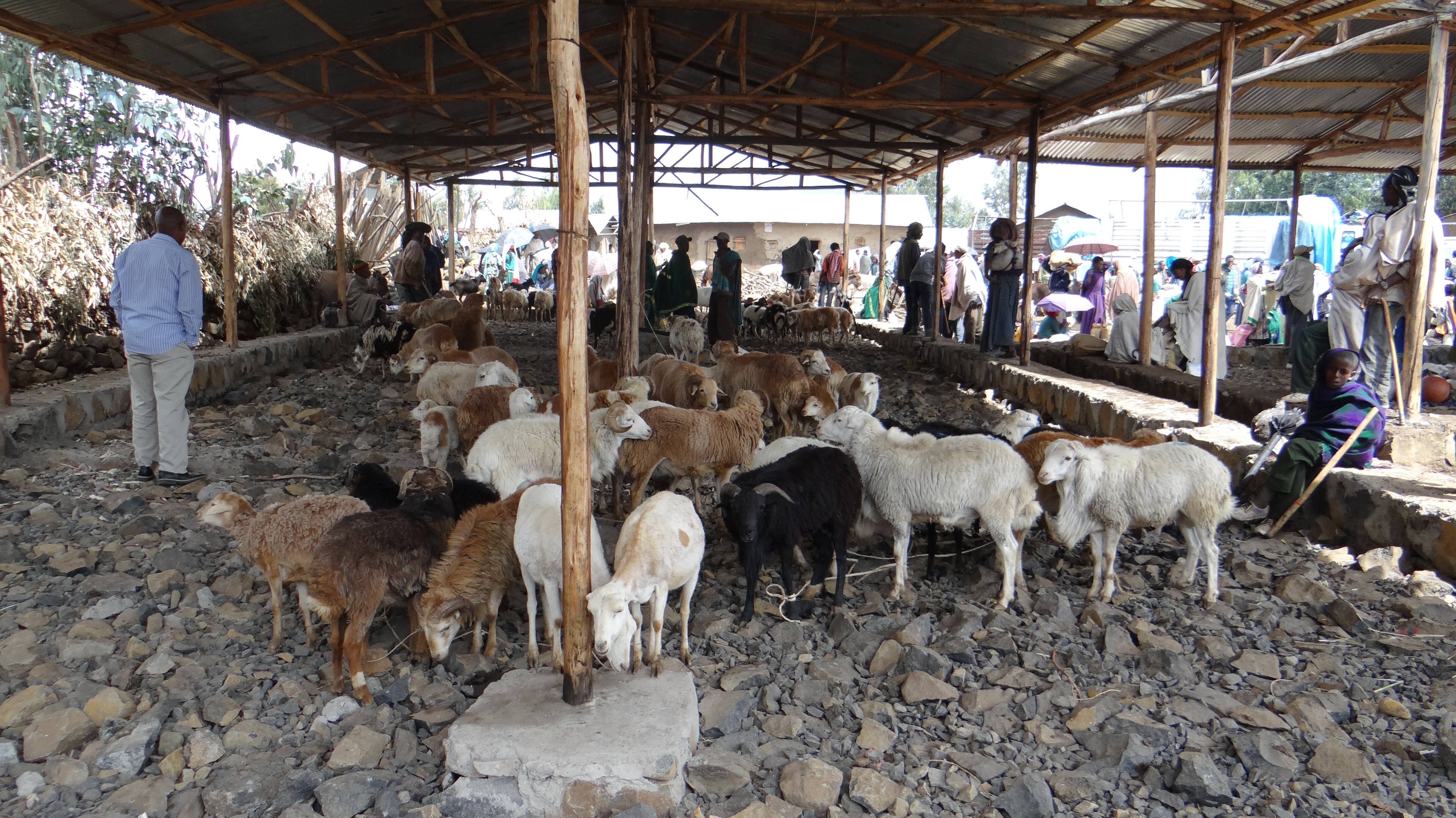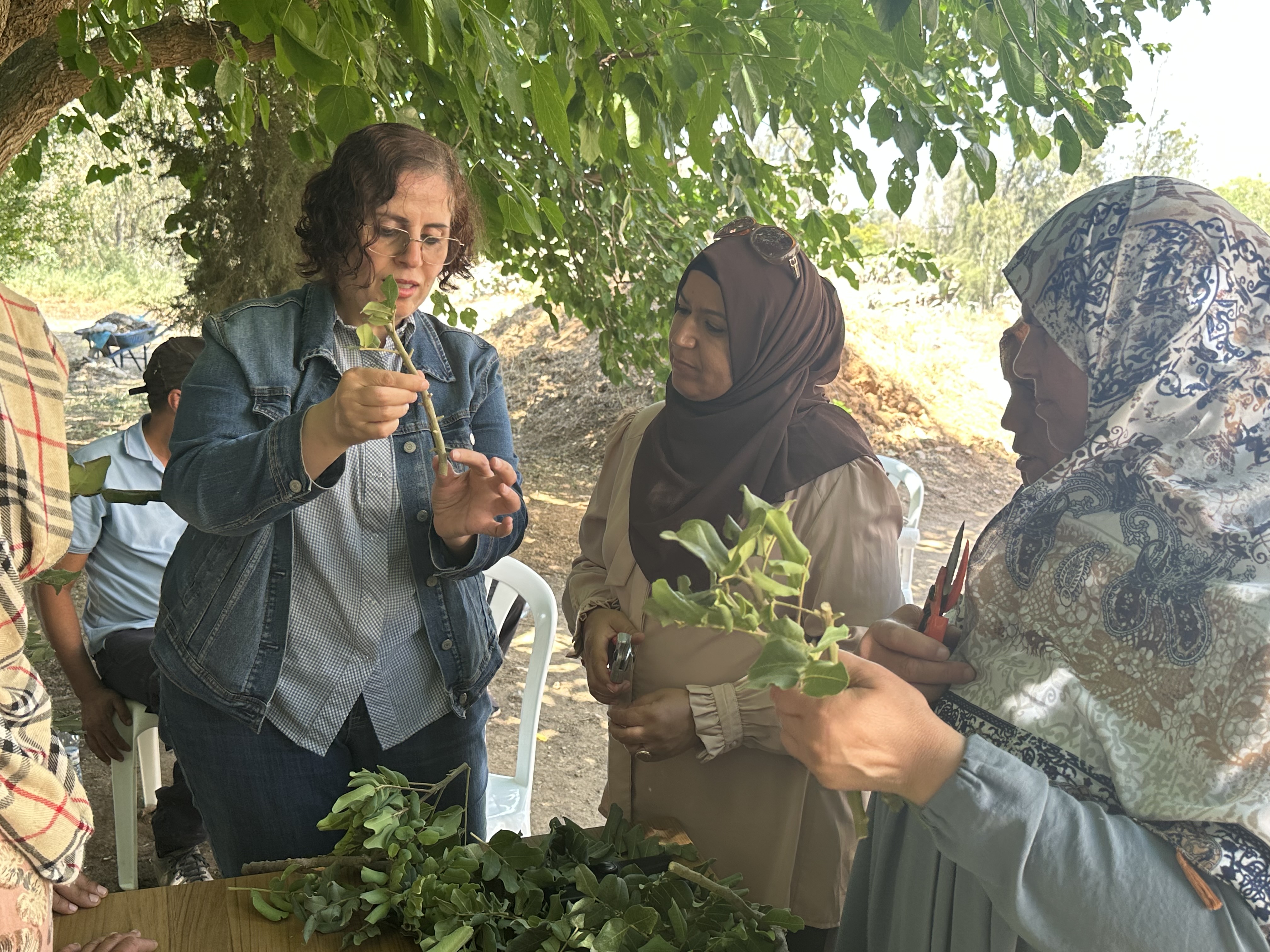Market Sheds in Ethiopian Livestock Markets boost Farmers’ Participation and Income

It is thanks to the support of CGIAR's Research Program (CRP) on Livestock and CRP PIM that this work is made possible.
By Dr. Girma Tesfahun Kassie
A new study conducted in the central Ethiopian highlands reveals that introducing animal sheds in livestock markets can increase farmers’ market attendance and income. 800 farming households who own small goats and sheep herds were surveyed as part of the study, which quantified the marginal impact of experimental market sheds on their income. The significant results were overwhelmingly positive.
A long and arduous journey separates farmers and their animals in the central highlands of Ethiopia from the nearest livestock markets. When they finally reach the market, the animals can be drenched by seasonal downpours or parched from hours and even days of walking, and then standing at market under a blazing sun, with little shelter to rest. In these conditions, the animals deteriorate fast, forcing farmers to sell them soon after arrival often accepting unsatisfactory offers.
Having animal sheds available at livestock markets could significantly change that dynamic, the study researchers have found. By sheltering the animals, as well as the farmers, from the vagaries of the weather, the sheds allow for longer negotiation time, achieving better prices per animal and increasing the frequency of the farmers’ visits to the market.
As in most sub-Saharan countries, the physical dimension of agricultural markets is exceptionally important in Ethiopia, particularly in rural areas. Often located on a marginal plot of land in the vicinity of towns or administrative capitals, livestock markets typically suffer from a lack of investment due to the dearth of research and information available on how valuable they are to sustainable development and the overall economy. Contributing to this situation is the lack of evidence of the potential impacts of these market services and facilities on rural livelihoods, a critical oversight this study is attempting to correct.
The international agricultural research community has joined forces with national partners to fill this gap and produce science-based evidence for policymakers to improve small farmers’ livelihoods. ICARDA and ILRI, as part of a national research project on small ruminants’ value chain development, conducted a baseline survey on selected value chains across Ethiopia. One of the issues identified as undermining small ruminant keepers’ market participation and performance was the lack of adequate market facilities.

The survey of 800 farming households owning small ruminants confirmed the positive impacts of introducing animal sheds to markets on farmers’ income and attendance. These findings are particularly significant as they will inform Ethiopian government officials on the types of investments urgently needed to revamp the livestock sector across the country. It is also timely, given the Ethiopian government’s recent formulation of a national livestock master plan and livestock-market development initiative, touted as a cornerstone of Ethiopia’s agricultural transformation agenda.
The study also reinforces the argument in favor of investing in market facilities in the central highlands and other similar socio-economic settings in Ethiopia.
Read the full study (limited access)
--------------------------------
ICARDA would like to thank the CGIAR Research Program on Livestock (Livestock CRP), and CGIAR Research Program on Policies, Institutions, and Markets (CRP PIM) for the financial support for the above study.


Dr. Girma Tesfahun Kassie is ICARDA's Senior Agricultural Market Economist



